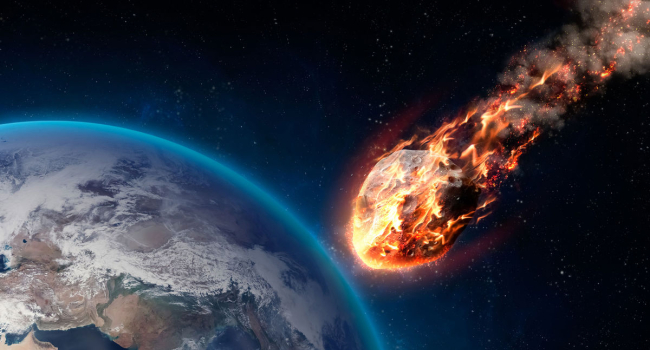
Asteroid explodes over Berlin: Scientists discover it few hours before explosion
Early on the morning of January 21, a small asteroid exploded in the sky over Berlin, creating a spectacular but harmless fireball visible for miles around. Small asteroids that reach the Earth's atmosphere flare up and explode in it: this happens quite often, but this case is notable because scientists discovered an asteroid flying towards our planet about 3 hours before the explosion. This happened only for the eighth time in history.
The asteroid, dubbed 2024 BXI, was first discovered by self-proclaimed asteroid hunter Christian Sarnecki, an astronomer at the Piskestetö mountain station, part of the Konkoly Observatory in Hungary. He identified the asteroid using the observatory's 60cm Schmidt Telescope, and NASA then provided a detailed prediction of where and when the asteroid would hit.
A live camera in the northern German city of Leipzig captured the moment of the explosion. The asteroid, which was about 3.3 feet (1 meter) wide before impact, likely began to break up about 30 miles (50 kilometers) west of Berlin.
#BREAKING: Moments ago, a small asteroid impacted Earth over Germany. Video from live cam in Leipzig.
— Moshe Schwartz (@YWNReporter) January 21, 2024
H/t @meteordoc pic.twitter.com/F1TLijsv9P
Sarnetsky appears to have a reason for calling himself an asteroid hunter: that he has actually discovered hundreds of asteroids in recent years and was the first to spot asteroid 2022 EB5 about two hours before it crashed into Earth's atmosphere. He also used data from the Konkoli Observatory to detect the approaching stone.
According to the European Space Agency, 99% of near-Earth asteroids smaller than 98 feet (30 meters) in diameter have not yet been discovered. The smaller the asteroid, the closer it must be to Earth before scientists can see it.
In some cases, near-Earth asteroids can be hidden in bright sunlight, such as the meteor that came from the rising sun over the Russian city of Chelyabinsk in 2013. As a result of its explosion in the sky, more than 1,600 people were injured and many windows were broken.
Government space agencies are now developing new technologies to scan the sky for asteroids before they enter Earth's atmosphere. NASA's NEO Surveyor satellite, scheduled to launch in 2027, and ESA's NEOMIR, expected to launch no earlier than 2030, will serve this purpose. In 2025, the Vera K. Rubin Observatory in Chile, funded by the National Science Foundation, will catalog the solar system from the ground and is expected to help hunt above asteroids.
- Related News
- Wheel of Death: new method will help astronauts stay fit in low gravity
- Due to anomalies of Orion spacecraft, lunar exploration program may be delayed for years։ NASA
- TAO Observatory: World's highest telescope to study evolution of galaxies and exoplanets
- Powerful M9.5 solar flare causes radio blackout in Pacific Ocean
- What will happen to the Earth if the Moon disappears?
- Key to conquering the Red Planet: Why is NASA studying solar storms on Mars?
- Most read
month
week
day
- Digital Julfa Network is launching a pan-Armenian centre in the metaverse, on the Fastexverse virtual platform 875
- Sparkles: Boston Dynamics unveils a furry robot dog that can dance (video) 783
- Xiaomi unveils exclusive Redmi Note 13 Pro+ dedicated to Messi and Argentina national team 751
- Is there a ninth planet in the solar system? Scientists find new evidence 660
- Smartphone catches fire in child's hand in Russia 653
- What will happen to the Earth if the Moon disappears? 629
- How to understand how protected a smartphone is from water and dust? 628
- World's largest 3D printer was created in USL It prints 29 meter-long structures 618
- New iPad Pro to receive M4 chip and to be more powerful than Apple computers 603
- iPhone 16 may get colored matte glass back panel, 7 colors 599
- Archive
